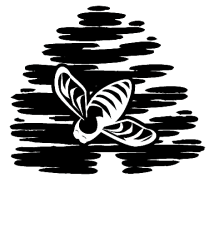Back about 10 or 12 years ago, I read an article by Kevin Kelly (then co-founder of the WELL and editor of the Whole Earth Review, later co-founder of Wired Magazine). It blew my mind and is largely why I took up beekeeping. He introduced me to the idea that a colony of individuals, operating according to simple rules, can exhibit an intelligence, problem solving ability and even memory that is beyond the limits of any of the individuals themselves.
This isn’t simply a case of the sum of the parts being greater than the parts of the sum, of a group pooling their efforts to do something that the individuals alone couldn’t achieve. Rather, the behaviors of the group are categorically different, an order of magnitude more nuanced and complex than the individuals themselves.
Neurons : Mind :: Bees : Hive Mind
My understanding of the way the neurons in the brain work hasn’t become much more sophisticated since high school biology class, but I did get an A, so I’ll take a swing at this. Information is communicated throughout the mind through neurons by crossing synapses, connection points between the branch-like ends of the neurons. As certain pathways and patterns are used more and repeated, the pathways are reinforced and become stronger, more likely to be activated. In this way, patterns that lead to desirable thoughts and behaviors take hold and persist.
Bees have varied means of communication, including wing beatings and smell, but the primary method of communicating the location of a nectar source or a potential new home is through the waggle dance, a highly structured combination of movements that indicate distance and direction relative to the sun. When a bee finds a potential food source or new home, she returns to the hive and performs this dance for her sisters. Some of the sisters may use that information to go check out potential location. If they like it, they’ll come back and do the same dance, if they don’t they may not. Over time, particular locations will gain momentum as more and more bees are doing the same dance, leading to a hive consensus.
Ants use a similar method for building hive consensus. As they walk, they leave a slight chemical trail. When an ant is wandering and finds one of these trails, they’re slightly more likely to follow it to then to wander elsewhere. If they find a foodsource, they will follow the trail back and forth between their colony and the food, reinforcing the trail. As more and more ants follow the same path, the trail gains momentum and a hive consensus emerges.
In these ways, bees and ants are able to compare a huge set of options (food sources, potential homes, etc.) according to a variety of variables and come to consensus about which is the best, even if most of the individuals never see more than a couple of the options, and even though they aer not “conscious” of how they are reaching those decisions. The ants, for example, merely choose to follow a chemical trail, without “realizing” why this is a valuable heuristic.
You can see these same processes at work in social bookmarking and ranking services like Digg and Del.icio.us. Individual users rate a site as being interesting, causing other users to visit it and, in turn, assess whether the site is interesting enough to rate it as interesting. Over time, certain sites gain momentum and rise to the top of the heap, even though most individuals only ever see a small fraction of the options.
There are several more explicit uses in computer science of this time of hive mind or swarm intelligence. For example, Ant Colony Optimization is an algorithm for solving computational problems based on this premise of random wanderings and reinforcement of promising pathways.
Some researchers have used stock market dynamics to leverage the power of the hive mind. In Wisdom of the Crowds, for example, James Surowiecki shows how Jimmy the Greek and companies like Hewlett Packard leverage interactions between individuals in stock market-like systems to distill answers to problems that are higher quality than those produced by any of the individuals themselves, no matter how well educated they are in the domain.
Individuals assess the likelihood of an event and try to judge whether the market is miscalibrated. The very act of buying “stock” in an outcome adjusts and calibrates the market. While any individual may be wrong, and may not be taking all the different variables into account, the system as a whole proves very resilient to individual limitations.
This Sunday’s New York Times Magazine has another great example. In the Idea Lab section, Duncan Watts describes an experiment he and his colleagues at Columbia University did on music downloads. They split their 14,000 participants into three groups: one were simply allowed to download any song they liked. The second and third got feedback before downloading about what other people had been downloading from within their group. In all other ways, the groups were identical.
Two remarkable things happened:
- The songs that emerged as popular were very different between the two feedback groups. For example, the number 1 song in one social influence group was the 40th most popular in the other.
- The disparity between number of downloads for popular and unpopular songs were much more extreme in the feedback groups.
An awesome demonstration of why understanding the dynamics of the hive mind are so important. Providing feedback loops to opinions, enabling a momentum of consensus to emerge actually changes the opinions of the individuals within the network. Ignore this lesson at your peril.
There are reams of articles and books on this, so I’ll leave it be for now, turn my attention back to beekeeping. Before I go, though, I owe the reader a quick distinction between some similar terms I’ve used:
- Hive Mind: a property of intelligence, behavior and/or memory that emerges from behaviors of a colony of individuals acting according to simple rules.
- Swarm Intelligence: Same as hive mind, but with an emphasis on problem solving. There is no memory to swarm intelligence.
- Wisdom of the Crowd: Any of a number of processes by which groups come to high quality decisions. For example, taking the average of 100 people’s estimation of how many jelly beans in a jar will often yield a more accurate assessement than any single individual. In this example, though, the reader will note that there is no interaction between the individuals, no reinforcement of their behaviors, so it is not the manifestation of a hive mind.
Perhaps you’d like to see the Hive Mind in action? Here’s an idea: Digg this article!





